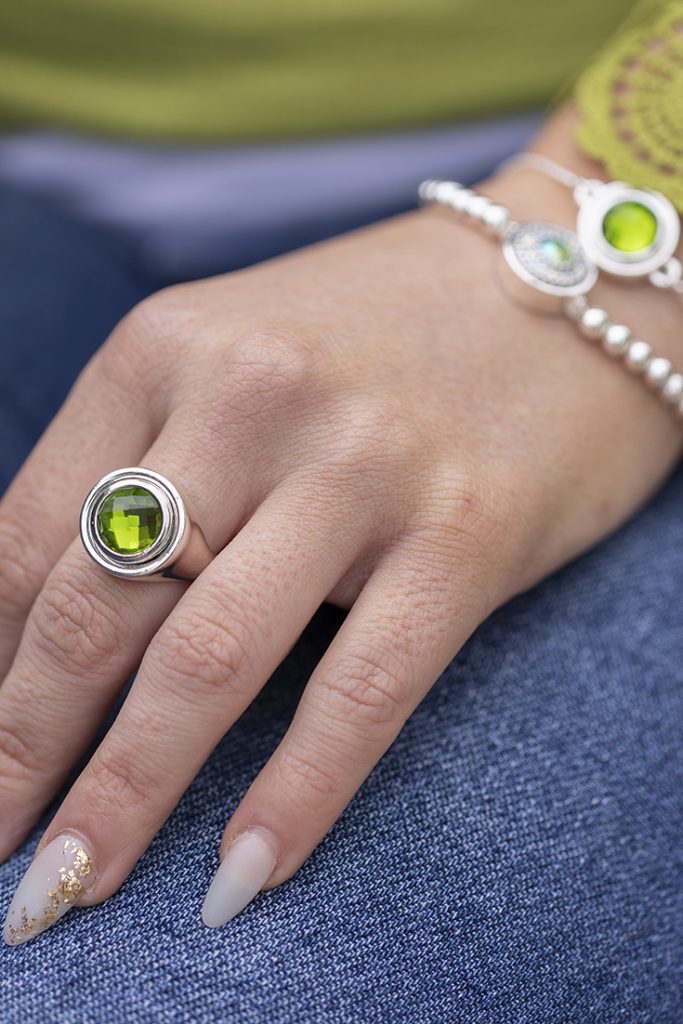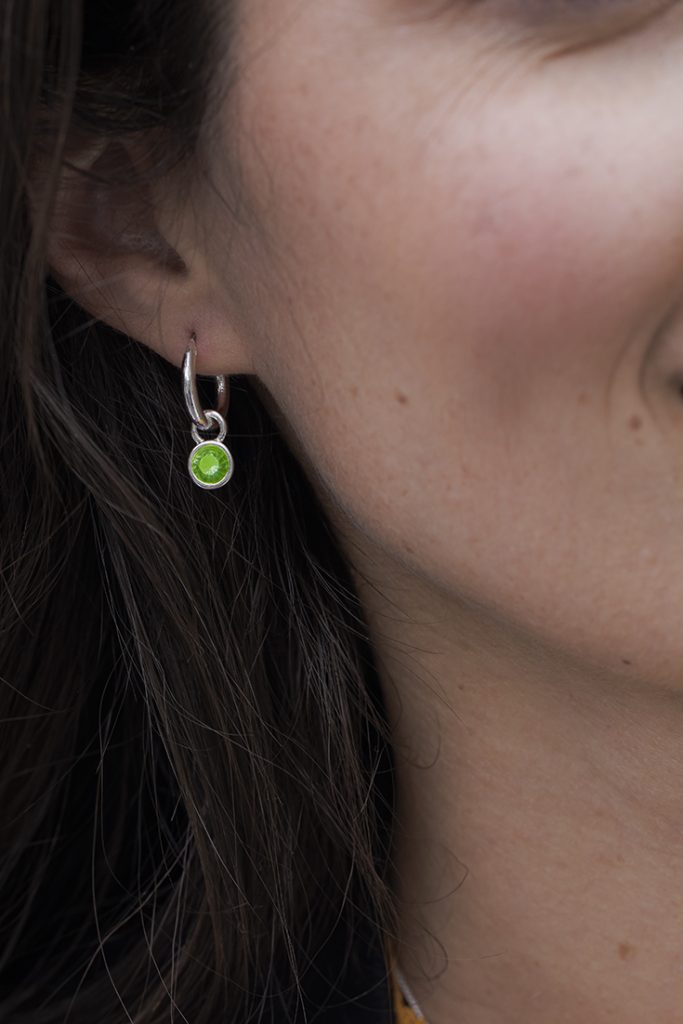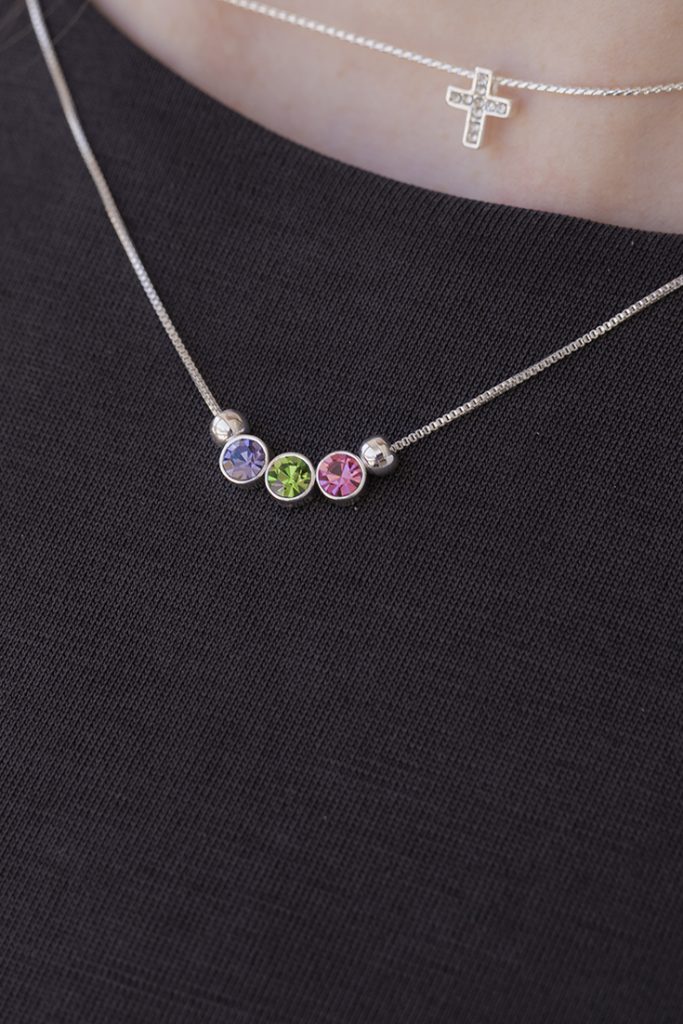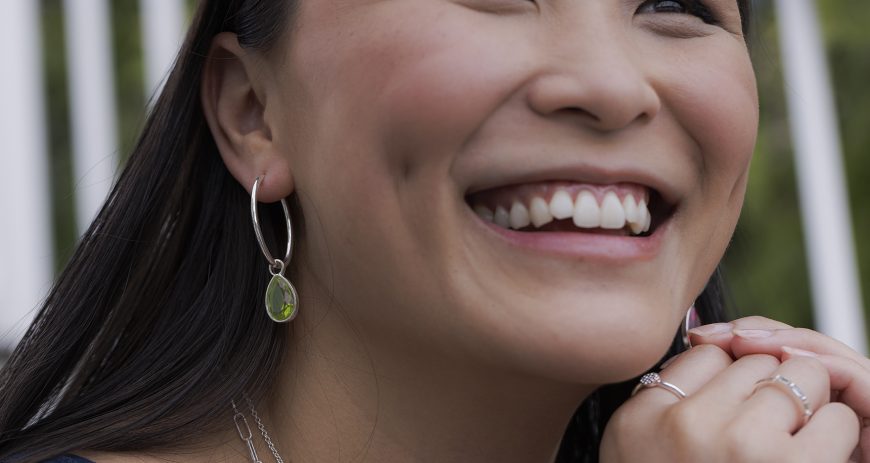What Is the August Birthstone?
 The August birthstone is the peridot. The peridot is also the gemstone traditionally used to commemorate the 15th wedding anniversary. Peridot is also referred to as chrysolite; it is a yellowish-green transparent variety of olivine (“Peridot”).
The August birthstone is the peridot. The peridot is also the gemstone traditionally used to commemorate the 15th wedding anniversary. Peridot is also referred to as chrysolite; it is a yellowish-green transparent variety of olivine (“Peridot”).What Are the Characteristics of the August Birthstone?
Peridot is unique in that it is one of the few gemstones that only comes in one color: an olive-green. How intense the green is, however, depends on how much iron is in the crystal structure. So while it only comes in one color, the color can vary from yellow to olive to brownish-green. The lighter the gemstone, the lower the concentration of iron (“Peridot”). Yellowish-green is the most common peridot color (“Peridot Description”).
What Is the History of the August Birthstone?
 While many believe that the word peridot comes from the Arabic word faridat, meaning “gem,” the origin of the word is actually not certain. The Oxford English Dictionary suggests it may be an alteration of the Anglo-Norman word pedoretés, a kind of opal (“Peridot”).
While many believe that the word peridot comes from the Arabic word faridat, meaning “gem,” the origin of the word is actually not certain. The Oxford English Dictionary suggests it may be an alteration of the Anglo-Norman word pedoretés, a kind of opal (“Peridot”).
Peridot appeared in priests’ jewelry as early as second century BCE and later in the churches of medieval Europe (“Peridot Birthstone”).
The earliest use of the word peridot is in the register of St. Albans Abbey, in Latin. Its translation in 1705 may be the first use of the word peridot in English. The register states that Bishop John, on his death in 1245, gave various items to the Abbey, including peridot (“Peridot”).
Early records state that the ancient Egyptians mined a green gem on an island in the Red Sea called Topazios, now known as St. John’s Island. The story goes that the island was infested with snakes making mining very difficult; then a pharaoh drove the snakes into the sea. But many people confused this gem—which is now known to be peridot—with topaz (“Peridot History and Lore”).
Others confused peridot with emeralds. Some historians actually believe Cleopatra’s famous emerald collection might have been peridot. Even people in the medieval times confused peridot for emeralds. For hundreds of years, people believed that the 200-carat gems that adorned the shrine of the Three Holy Kings in Germany’s Cologne Cathedral were emeralds. However, they were, in fact, peridots (“Peridot History and Lore”).
Many people also believed that the peridot could provide protection against evil spirits and ward off “terrors of the night” (“Peridot Birthstone”).
Where Can You Find the August Birthstone?
 One of the coolest facts about peridot is its source. While most peridot comes from places such as China, Myanmar, Pakistan, Tanzania, Vietnam, and the United States, some peridot actually journeyed to the Earth on meteorites (“Peridot Birthstone”)! However, these are rare.
One of the coolest facts about peridot is its source. While most peridot comes from places such as China, Myanmar, Pakistan, Tanzania, Vietnam, and the United States, some peridot actually journeyed to the Earth on meteorites (“Peridot Birthstone”)! However, these are rare.
Gem miners more commonly find peridot as “irregular nodules” (rounded rocks with peridot crystals inside) in some lava flow. More rarely, gem miners find peridot as large crystals in the veins or pockets of certain kinds of solidified molten rock. Experts believe that these deposits relate to the sea floor spreading when the Earth’s crust splits; then rocks from the Earth’s mantle are pushed up to the surface (“Peridot Description”).
People can also find some peridot in Peridot Beach, Hawaii, where the beach sands actually shimmer green (“Peridot Birthstone”)!
Needless to say, the peridot is a beautiful, exotic, and interesting August birthstone! Whether or not you have an August birthday, the peridot makes a gorgeous addition to any accessory.
Visit StyleDots.com today to shop our peridot crystal collection.
Learn more about birthstones in our Birthstone Guide.

